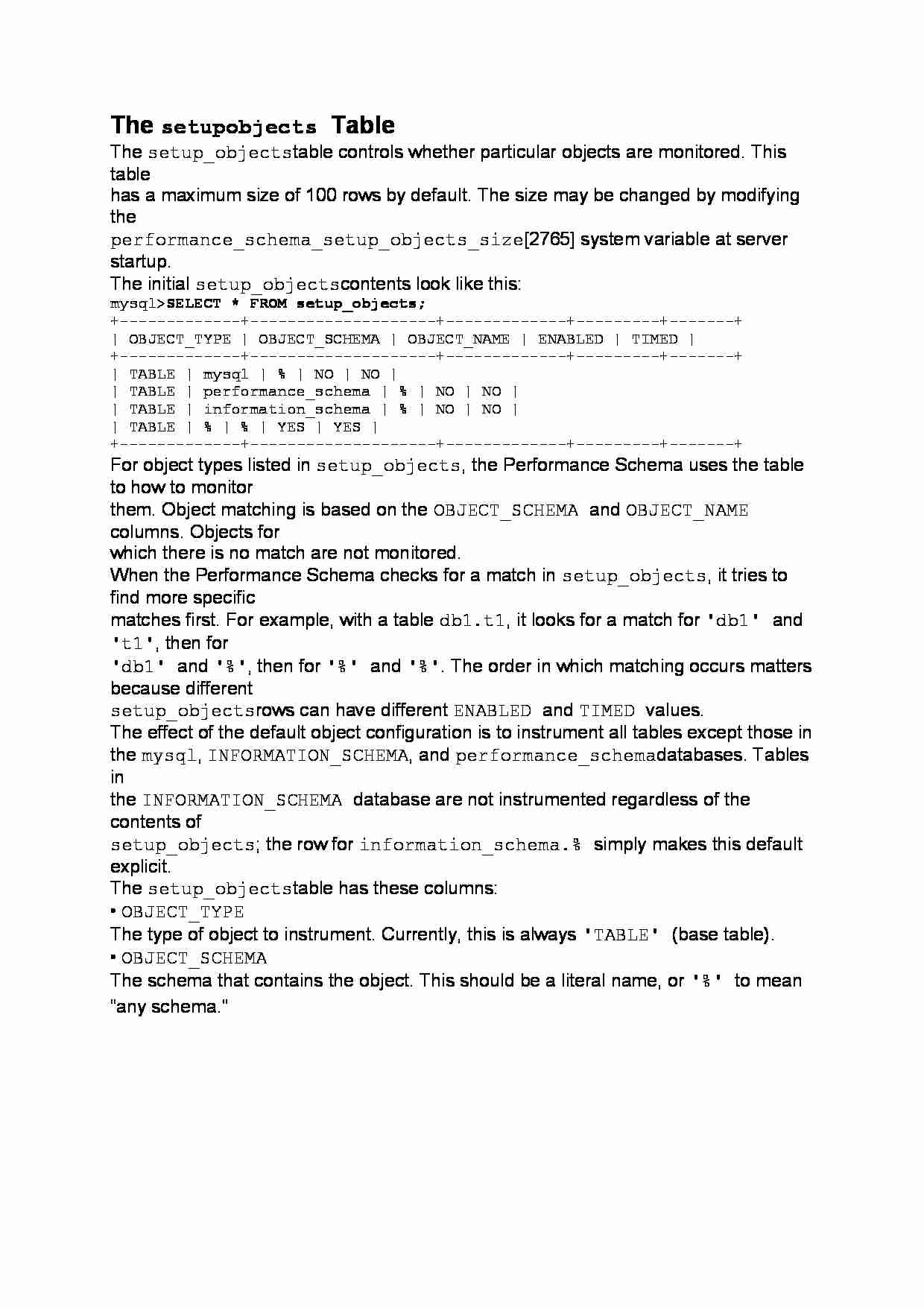
The setup objects Table
The setup_objects table controls whether particular objects are monitored. This table
has a maximum size of 100 rows by default. The size may be changed by modifying the
performance_schema_setup_objects_size [2765] system variable at server startup.
The initial setup_objects contents look like this:
mysql SELECT * FROM setup_objects;
+-------------+--------------------+-------------+---------+-------+
| OBJECT_TYPE | OBJECT_SCHEMA | OBJECT_NAME | ENABLED | TIMED |
+-------------+--------------------+-------------+---------+-------+
| TABLE | mysql | % | NO | NO |
| TABLE | performance_schema | % | NO | NO |
| TABLE | information_schema | % | NO | NO |
| TABLE | % | % | YES | YES |
+-------------+--------------------+-------------+---------+-------+
For object types listed in setup_objects, the Performance Schema uses the table to how to monitor
them. Object matching is based on the OBJECT_SCHEMA and OBJECT_NAME columns. Objects for
which there is no match are not monitored.
When the Performance Schema checks for a match in setup_objects, it tries to find more specific
matches first. For example, with a table db1.t1, it looks for a match for 'db1' and 't1', then for
'db1' and '%', then for '%' and '%'. The order in which matching occurs matters because different
setup_objects rows can have different ENABLED and TIMED values.
The effect of the default object configuration is to instrument all tables except those in
the mysql, INFORMATION_SCHEMA, and performance_schema databases. Tables in
the INFORMATION_SCHEMA database are not instrumented regardless of the contents of
setup_objects; the row for information_schema.% simply makes this default explicit.
The setup_objects table has these columns:
• OBJECT_TYPE
The type of object to instrument. Currently, this is always 'TABLE' (base table).
• OBJECT_SCHEMA
The schema that contains the object. This should be a literal name, or '%' to mean “any schema.”
... zobacz całą notatkę



Komentarze użytkowników (0)